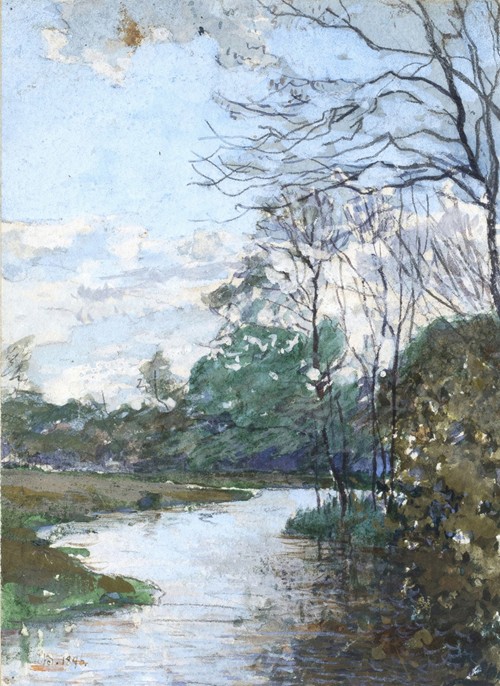

Ludwig Bolgiano
Ludwig Bolgiano was a German painter and draughtsman.
Ludwig Bolgiano came from a family that came to Munich from Italy via the Bavarian Rhine Palatinate. His grandfather, Franz Bolgiano (1778-1857), was a college secretary, art collector and dealer; his eldest son Carl Theodor Bolgiano (1816-1897) taught as a full professor of Bavarian, German and French civil law at the Ludwig Maximilian University in Munich. His mother, Babette, née Müller (1831-1912), came from Amorbach. As a painter, Ludwig frequently visited the Bavarian town in the Odenwald and captured motifs from Amorbach and its surroundings in many drawings and paintings. He attended the Maximiliansgymnasium in Munich from 1876 until graduating in 1885, together with Fritz von Hellingrath, Ludwig Döderlein, Oskar Piloty, Wilhelm Merck and Ivo Striedinger, among others.
He initially enrolled at the Ludwig Maximilian University in Munich to study law, took painting lessons at Friedrich Fehr's private school from 1890 and studied for two years at the art academy in Gabriel Hackl's "nature class" from October 1890. Study trips took him through Germany, to Austria, Switzerland and Italy. Unmarried throughout his life, he lived - together with his sister Marie (1862-1916) - in Munich, in the house at Von-der-Tann-Straße 3, which is still preserved today, and worked in a studio in Heßstraße. During the Second World War, he moved to Grabenstätt am Chiemsee, where he died in 1948. He was buried in the older part of Munich's Waldfriedhof cemetery alongside his sister.
Bolgiano was primarily active as a landscape painter and draughtsman and found his motifs mainly in the area around Munich, in the Isar valley and in Chiemgau, but also in and near Amorbach and Rothenburg ob der Tauber, in the Main and Altmühltal valleys, in Tyrol and in South Tyrol. From 1896, he took part in the exhibitions of the Munich Art Association as well as the annual exhibitions in the Royal Glass Palace, the Maximilianeum, the Neue Pinakothek, the House of German Art and the collective exhibitions of the Munich Artists' Cooperative.
In 1909 he was awarded the gold medal at the International Art Exhibition in Munich, where he was represented with three paintings and several drawings, and in 1911 the Prince Regent Luitpold Medal in silver. In 1915 he was awarded the title of professor. Purchases were made by the Bavarian state and the municipal art collections, King Ludwig III, the Prince of Hohenzollern and the Imperial Treasury Minister Franz Xaver Schwarz, among others.
From 1912 to 1919, he was a member of the board of the Künstlergenossenschaft (MKG) as secretary, and later also of the Neue Münchner-Künstler-Genossenschaft (NMKG). He was also a member of the "Association for Christian Art" in Munich, a member of the state purchasing commission in the Glaspalast, art advisor for the municipal painting collection, chairman of the "Exhibitors' Association of Munich Artists" (AVMK) and the artists' group "Die Achtundvierziger" as well as a committee member of the Munich Art Association. As a member of the Bavarian State Committee for Nature Conservation, he succeeded Gabriel von Seidl as chairman of the "Isartalverein". From 1901, he was an honorary member of the Catholic student fraternity KDStV Aenania München.
